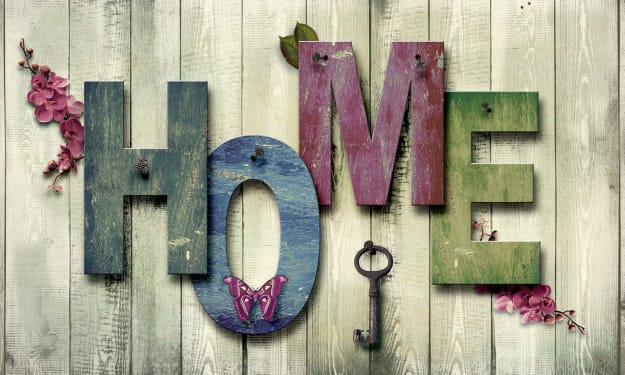What is Beauty?
Is the world's definition of beauty good enough?

Beauty is in the eye of the beholder; beauty is on the inside, not the outside. Young children grow up hearing these phrases of encouragement throughout their lives. As one grows and matures into adulthood their idea and envisionment of beauty changes. The painting of the ugly duchess is an "ugly" painting by the shallowest definition of beauty. However, some correctly believe, that influences from one's culture and background have to do with the way that one perceives beauty.
When it comes to defining beauty there is no one correct definition. Beauty is something that is twofold. Beauty can be something or someone’s physical appearance. It could also be what one views as an appealing quality. However, all of these things change with influences from the world and one’s heritage. In 1503 the time of the painting, they had different standards of beauty from what we have today. For example, they preferred women to have high foreheads and no eyebrows. (The history of beauty through the ages) Many people have their own definition of beauty within their culture’s definition. For some, it is physical and internal beauty, while for others it can only be one or the other. While there are different standards of beauty that can be seen as a universal whole, these standards are physical and or internal.
As a race, humans place a lot of emphasis on their appearance and actions. However, this is because we are social creatures. We care about our appearance in order to help ourselves blend or fit in. This is true, however, with all social creatures. For example, by grooming each other monkeys not only gain respect but a better social standing by improving their coats appearance. (Wikipedia) The concept of grooming does not only apply to monkeys however, it also applies to the ugly duchess painting. There is a stark contrast between her well-groomed dress and hat compared to her un-groomed face. As a result of her face being un-groomed it lowers her status in the viewers eye making her appear “ugly.” This is further proof of how a human’s view and idea of beauty is constantly changing. There are always new ways to change our appearances inside and out. As a result, artists change their art and definition of beauty to fit their culture. For instance, Mayans used to think it was “beautiful” to have crossed eyes. However, in modern days, it is not considered the ideal standard of beauty to have crossed eyes. (From Ancient Times to the 20th Century). There are modern-day discrepancies as well. In Japan, it is considered beautiful to have crooked teeth, however, in the western countries, it is considered beautiful to have straight teeth. (RocketNews24 RSS 2014). There are many instances, in which beauty is based on culture and race. Beauty standards around the world vary because of the observer’s point of view.
However, the one thing that stays constant in our standard of beauty is the body. The human body is always considered beautiful even if it must change in order to fit the mold of beauty. While this is true for in-person sightings of beauty, it is not always the same for paintings because they are two-dimensional. As a result, they can be deemed ugly or beautiful based on the viewers opinion, relatability, and background.
My initial reaction to the painting was one of shock. This is simply because the painting is meant to be jarring and even horrifying. I believe that the artist was attempting to make a comment on how society has deluded people who are “beautiful” to believe that they must add things to themselves to be worthy of such a title.
Beauty is a constantly changing thing; due to influences people have throughout their lives. Everyone can define beauty differently, although there are some constants. Whenever it comes to art there are many differing opinions as to what is beautiful, and what is not. However, all art makes a statement, and what makes all art beautiful is its purpose or its intended purpose by the artist. As a result, when I began to define beauty as a whole I began too see the painting as beautiful because the artist was able to meet his goal or purpose for the painting. Resulting from the “ugly” imagery that the artist used it made me think deeper into what beauty is. Not only did it inspire deeper thinking, but it also created space to define beauty in a non-conforming and non-stereotypical way.
In reality, all humans are beautiful in some form. Some have inner beauty and others have outer beauty. While there are some people whom society classifies as having neither forms of beauty, in some time period they were considered beautiful. In conclusion, while there are different forms of beauty and a constantly shifting definition of beauty, there are things that will always be beautiful in the eye of the beholder. I believe that this painting is beautiful because it met the author’s purpose and made me redefine beauty.
References:
Quentin Matsys. The Ugly Duchess. 1503. Oil on Oak Panel. National Gallery, London.
"The History of Beauty." The History of Beauty through the Ages. N.p., n.d. Web. 17 June 2016.
"The Maya Concept of Beauty." From Ancient Times to the 20th Century. N.p., n.d. Web. 17 June 2016.
"Social Grooming." Wikipedia. Wikimedia Foundation, n.d. Web. 17 June 2016. "4 Japanese Beauty Fads That Westerners Just Don't Understand." RocketNews24 RSS. N.p., 2014. Web. 17 June 2016.
About the Creator
Katy Christensen
Just another human trying to make a difference in the world...






Comments
There are no comments for this story
Be the first to respond and start the conversation.